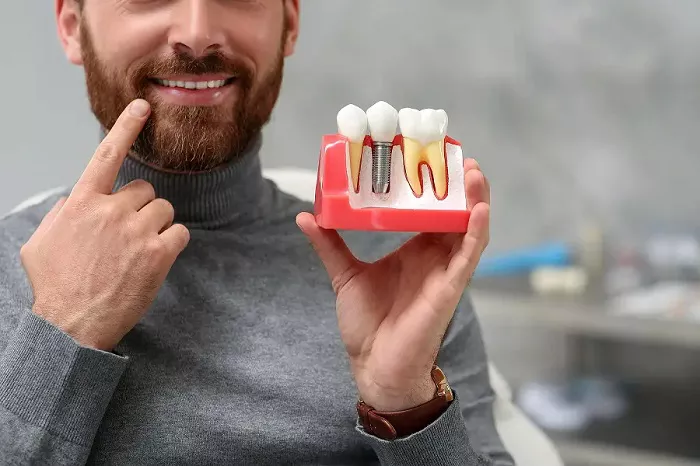Dental implants have become a popular solution for replacing missing teeth, offering a durable and natural-looking alternative to dentures and bridges. One common question patients ask is whether dental implants are stronger than real teeth. To answer this, it’s important to understand the structure, function, and limitations of both natural teeth and dental implants. This article explores the strength, durability, and functionality of dental implants compared to real teeth, providing a clear understanding of their differences and similarities.
The Anatomy of Natural Teeth
Structure and Composition
Natural teeth are composed of several layers, each with a specific function. The outermost layer, the enamel, is the hardest substance in the human body. Beneath the enamel lies the dentin, a porous tissue that supports the enamel and transmits sensory signals. The innermost layer is the pulp, which contains nerves and blood vessels. This complex structure allows teeth to withstand significant pressure and perform essential functions like chewing and biting.
Natural Teeth and Their Limitations
Despite their strength, natural teeth are not indestructible. Enamel can erode due to acidic foods, poor oral hygiene, or grinding. Dentin can become exposed, leading to sensitivity and decay. Additionally, teeth can crack or break under excessive force, such as biting on hard objects or experiencing trauma. While natural teeth are remarkably resilient, they are not immune to damage.
The Design of Dental Implants
Components of a Dental Implant
A dental implant consists of three main parts: the implant post, the abutment, and the crown. The implant post, typically made of titanium, is surgically placed into the jawbone, where it fuses with the bone through a process called osseointegration. The abutment connects the post to the crown, which is the visible part of the implant and is designed to mimic the appearance of a natural tooth.
Materials Used in Dental Implants
Dental implants are made from high-quality, biocompatible materials. Titanium is commonly used for the implant post due to its strength, durability, and ability to integrate with bone. The crown is often made from porcelain or ceramic, which are both strong and aesthetically pleasing. These materials are chosen for their ability to withstand the forces of chewing and biting.
Comparing Strength and Durability
Resistance to Wear and Tear
Dental implants are highly resistant to wear and tear. Unlike natural teeth, which can erode or decay over time, implants are not susceptible to cavities or enamel erosion. The materials used in implants are designed to withstand the daily forces of chewing and biting, making them a long-lasting solution for tooth replacement.
Ability to Withstand Force
While dental implants are strong, they are not necessarily stronger than natural teeth. Natural teeth are anchored in the jawbone by periodontal ligaments, which provide a slight cushioning effect and allow for minor movement. Implants, on the other hand, are rigidly fixed in the bone. This rigidity can make implants more susceptible to damage under extreme force, such as grinding or clenching.
Functionality and Performance
Chewing Efficiency
Dental implants function similarly to natural teeth, allowing patients to chew and bite with ease. The stability of implants ensures that they can handle the same types of foods as natural teeth, including tough or crunchy items.
However, patients with implants should still avoid excessively hard foods to prevent damage to the crown or abutment.
Sensory Feedback
One key difference between natural teeth and dental implants is the presence of sensory feedback. Natural teeth have nerves that provide feedback on pressure and temperature, helping to protect them from damage. Implants lack this sensory feedback, which means patients need to be more cautious when biting or chewing to avoid overloading the implant.
Longevity and Maintenance
Lifespan of Dental Implants
With proper care, dental implants can last a lifetime. The titanium post integrates with the jawbone, providing a stable and permanent foundation. The crown may need to be replaced after 10 to 15 years due to normal wear and tear, but the implant itself is designed to be a long-term solution.
Maintenance Requirements
Maintaining dental implants is similar to caring for natural teeth. Regular brushing, flossing, and dental checkups are essential to ensure the health of the implant and surrounding tissues. Unlike natural teeth, implants are not susceptible to decay, but they can still be affected by gum disease if proper oral hygiene is not maintained.
Aesthetic and Psychological Benefits
Natural Appearance
Dental implants are designed to closely resemble natural teeth in both shape and color. This makes them an aesthetically pleasing option for tooth replacement, helping patients regain their confidence and smile without hesitation.
Psychological Impact
The loss of a tooth can have a significant psychological impact, affecting self-esteem and social interactions. Dental implants provide a permanent solution that restores both function and appearance, improving the patient’s quality of life and overall well-being.
Conclusion
Dental implants are a highly effective and durable solution for replacing missing teeth. While they are not necessarily stronger than natural teeth, they offer comparable strength and functionality, along with additional benefits such as resistance to decay and a natural appearance. Understanding the differences between dental implants and natural teeth can help patients make informed decisions about their oral health and choose the best treatment option for their needs.

